Solarpunk Urbanism
 wapo.st
wapo.st
Access options: * [gift link](https://wapo.st/4gXAt69) - registration required * [archive.today](https://archive.is/2TZcQ) * [ghostarchive.org](https://ghostarchive.org/archive/98dKo)
 saportareport.com
saportareport.com
cross-posted from: https://yall.theatl.social/post/3949298 > From the Saporta Report: > >  > Hurricane Helene rocked the Southeast in late September, bringing devastation to parts of Florida, Georgia, North Carolina, and more. The storm, a Category 4 at its peak, arrived in Georgia on Friday night and affected almost every part of the state. Gov. Brian Kemp has called the damage left by the storm “unprecedented.” Georgia cities […] > > The post [Atlanta’s green infrastructure at work during Hurricane Helene provides an example of learning from the past](https://saportareport.com/atlantas-green-infrastructure-at-work-during-hurricane-helene-providing-an-example-of-learning-from-the-past/uncategorized/mark-lannaman/) appeared first on [SaportaReport](https://saportareport.com).
[Related paper](https://www.nature.com/articles/s44284-024-00119-4.epdf?sharing_token=_awlBbYaejqaHNuaR5P0fdRgN0jAjWel9jnR3ZoTv0OAjaGHQUKhOauJRiRUnv5r1hH0ucDzzkn2New8DCo-iGEnuRU3ZUloKeFNMmjQeurx-b_uzcISfRCkRieuM69hKRCSNNYSqX-KfqnhHza2sRX1xjkXoDhKis7Cx0JH0PI%3D) I'll note that in the US, their urban area definition includes a lot of outlying and substantially unpopulated areas which fall within county boundaries; these areas tend to show up as having long travel times to services.
with Google's assault on Invidious leaving it inoperable, consider watching this video [with FreeTube](https://freetubeapp.io/), a nifty [open source](https://github.com/FreeTubeApp/FreeTube?tab=readme-ov-file) program that lets you watch youtube videos privately!

This is a little different from my other photobashes in that this one can’t really pass as a postcard. I ended up having so many things to include in the topic of flood-compatible cities that the only way to fit them all was to keep expanding the canvas. I think I have enough for a second picture (and possibly a third), but we’ll get to what’s missing in a moment. So awhile back, I stumbled on to [this discussion](https://www.reddit.com/r/solarpunk/comments/1f15h7a/iso_swampy_solarpunk_brainstorm/) on reddit about what solarpunk might look like in a wetland area (and what it'd mean for cities built in wetlands). I very much believe that solarpunk will look radically different based on location, with infrastructure, routines, fashion, etc, being carefully tailored to fit climate, local weather, and the available materials, so this really caught my attention. That discussion lead to [this one](https://slrpnk.net/post/12735795), and [this one](https://slrpnk.net/post/12769234), then [this one](https://slrpnk.net/post/13230132) as well as [this conversation back over there](https://www.reddit.com/r/solarpunk/comments/1fej443/looking_for_helpfeedback_with_art_of_a/) plus several good chats on the Fully Automated and Solarpunk Hub discords. I received a ton of awesome input which I genuinely couldn’t have made this without. Thank you! Most of the ideas here came from those talks. Even when people disagreed with each others’ suggestions, I tried to include them in the scene if I could make them fit. The basic idea is for this to be a city that expects to be flooded regularly. One where, if the water rises a few feet seasonally, everything stays basically the same, and if a huge storm rolls in and swamps the whole area, people grumble about it, but can mostly still go about their day (using things like elevated walkways). The lower portions of buildings are used for third place activities that can be packed up and removed when forecasts predict bad weather (like marketplaces) or which use sturdy, permanent structures which can be hosed clean later. There’s an argument to be made that the best answer to building cities in swamps is the simplest: don’t do it. And if you’ve failed that step, then you shouldn’t rebuild when whatever you build inevitably gets flooded. I think there’s a lot of reasons to push back on that. Most major cities are already built on waterways or on the coasts due to the value of those locations for shipping and industry. Some are already below seal level, others are likely to be in the future as climate change worsens. These places house millions of people, they represent home, historical legacies, and preserving them helps preserve the cultures and communities of the people who live there. Lots of cities are looking for answers to rising water, and I’d love to see what solarpunk versions look like. Sponge city tactics came up a lot in our discussions but we struggled to find ones that fit for a city (like New Orleans) which are at least partially located below sea level. If I expand the image to the left, I think I can definitely include a few, but generally, the water needs somewhere to go. That said, I think this scene fits a tight shot of a much larger take on sponge city tactics of slowing water and absorbing it where possible. Our current society has spent a lot of resources on straightening rivers for shipping and building dams and levees to shunt extra water downstream, to make it the next town’s problem, rather than suffer floods themselves. Farmers don’t want their fields washed out or polluted with debris so they build more levees and so on and so forth. I think a solarpunk civilization might accept on some level that rivers are going to meander, they’re going to rise seasonally, and they’re going to flood the flood plains they’ve always washed over, and it might build with those expectations in mind. A solarpunk setting might adjust itself to coexist with the weather and floods rather than use huge infrastructure projects to try to keep them away. The admittedly thin backstory I’ve got in mind is that this was a city which frequently flooded, and where some of its lowest areas (possibly mostly abandoned already due to uninsured damages and unlivable conditions near the collapse) were ceded to the water but not surrendered altogether. People built some structures higher than the water is likely to reach, and everywhere else, they float on it in boats, float houses, or even large rafts which contain small neighborhoods. They farm locally using floating gardens, hydroponics, Chinampas, and more. This isn’t a pristine wetland that’s been colonized, but a flooded neighborhood which has been partially rewilded. I pulled in a few different living-with-water concepts in for this one: * The lifted buildings are an upscaled version of the lifted houses you can find all along the US Gulf Coast, intended to survive storm surges and floods during hurricanes. * I based the covered upper walkway on the iron lace balconies found on some buildings in the New Orleans French Quarter. It’s not quite the ‘correct’ use of the design, since they don’t traditionally span from building to building, but I thought it’d be a nice reference. The goal here is that if the area really floods, and the ground level is unsafe to traverse, people still have a way to get around. For safety purposes, I figure each building needs a ladder on each road to access the upper level in an emergency. For accessibility, I included frequent, standardized elevators and 15 degree ramps. * I used [this amphibious bus design](https://camillc.com/hydraterra/) because it looked more municipal than the DUKW style duckboats many cities have for recreational purposes. Credit to Cromlyngames for suggesting this idea (and then making [this 3d model about it](https://www.thingiverse.com/thing:6744397)). I suspect the amphibious design would be harder to maintain than a normal bus because of the sealed hull, but perhaps some of the efficiencies and practice that come with a larger, standardized fleet would help. * Dutch-style floating houses (these exist all over the world but I referenced dutch ones while making this scene). These are just meant to be towed into place and parked. Unlike the houseboats which are more boat than house and can travel as they want. * A Bangkok-style water bus – the idea is that the flooded zone is likely somewhat shallow, with deeper waterways intended for transit between neighborhoods of floating houses, large rafts supporting small neighborhoods, and through rivers and canals in the dryer parts of the city. If I do another scene, I’ll try to include a transfer station where passengers can switch between boat and an elevated train. * Waterways with restored eelgrass for manatees. I wanted to show some of the work that’s been done restoring rivers in the US south. * [Chinampa agricultural system](https://en.wikipedia.org/wiki/Chinampa) (farming on artificial islands) this is a pretty ancient farming practice from Mexico and Central America, which is still in use in some areas, and I’m still learning about it. I’ve done my best to get the scale and composition of the design correct. Some of the trees might be a bit overlarge, but they wouldn’t be planted very densely. Other notes/elements included: * There’s a Savonius wind turbine attached to one of the dolphins (poles) for the dock. I imagine this probably isn’t supposed to be there, since it could get in the way during a high flood, but perhaps there’s not much enforcement or its the subject of a disagreement. * Awnings and porches to shade windows and balconies and buildings. The simple solutions work. * The hospital in the background would need to be able to operate during a flood, and to have water access (possibly via canals) so that people with only boats can access it quickly, in addition to road access. * The climbing wall probably isn’t ideal, as you’d want open spaces between the pillars if the flood will have a current. This was kind of an art decision - I needed a type of tall, narrow third place to include that would demonstrate its use even with the bus in the way and that seemed like the best option I could think of. Climbing walls are often made with wood frames and plywood – this one would have to be able to survive submersion, so perhaps it’s made from thick sections of recycled plastic or something similar. My other plan was just some trees, to show that it was a park, but that wasn’t as clear. Speaking of third places, here’s some other ideas we had for third places you could have under these buildings. Presented in no particular order: * Tide pools and natural landscape features * Parks * Dog Parks * Meeting rooms * Lecture spots (could double as a bring-your-own-movie movie theater) * Squash courts * Playground (depending on the design) * Planetarium? * Speaker’s corners * Booths for food trucks or downstairs seating for a lifted cafeteria * Parkour course * Roller rink * Laser tag/paintball arena * Fresh water reserve tanks (firefighting, heat sinks, municipal cleaning as well as last reserve drinking water post major floods * Possibly storage for flood-tolerant stuff like scaffolding Things I’d like to include next time: * Floating neighborhoods in the style of the floating islands of the Uros on Lake Titicaca (this would take a fair bit of space and a lot more reading) * A transfer station where passengers can switch between boat and an elevated train * Amphibious emergency vehicles This image, like all the [Postcards from a Solarpunk Future](https://jacobcoffinwrites.wordpress.com/postcards-from-a-solarpunk-future/), is CC-BY, use it how you like.
A well-researched video that explains why some dense urban areas are quite expensive. TL;DW: Despite a substantial historic housing stock, our most expensive cities have built very little housing in recent years, leading to very low vacancy rates and high prices. Ramping up housing construction will be a necessary part of solving the affordability crisis.
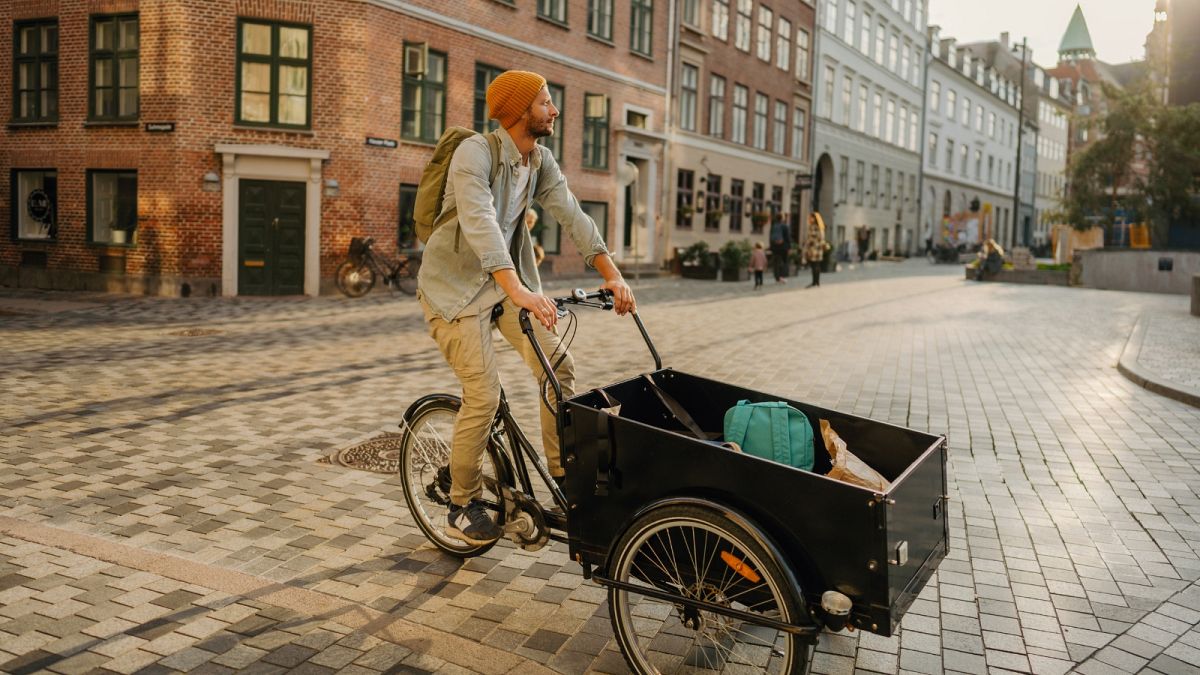 www.euronews.com
www.euronews.com
The surge in online shopping, accelerated by COVID-19, has driven up the demand for package deliveries, and that demand continues to rise. As traditional delivery methods contribute to urban traffic congestion and pollution, cargo bikes - a staple of bike-friendly countries like Denmark and the Netherlands - are becoming a common sight in cities across Europe as a sustainable and efficient alternative to vans. These larger, typically electric bikes with separate carriers can transport a wide range of loads, from small parcels to larger items, making them ideal for urban deliveries. In Europe, it is estimated that up to 50 per cent of motorised trips involving the transport of goods in cities could be made by cargo bikes and bicycles, according to a recent study.

Hi, I just wanted to say thanks for all your help on [my previous question](https://slrpnk.net/post/12769234) planning art of a more flood-compatible city! I've tried to include everyone's suggestions from last time, plus everything from [here](https://slrpnk.net/post/12735795), and discussions on reddit and discord. I don't plan to clutter up the community with any drafts after this one, but I was hoping to get one more pass with my current sketch since its based mostly on your ideas. Is there anything you'd like to see added or changed in a depiction of a city that's built to flood? Thanks again!
This question comes with my thoughts on a swamp city, but is open to thoughts about any biome. We know cities are their own form of ecosystem, and all ecosystems must have decomposers. Right now, people are always fighting against them and hating them, which I understand--I also don't like seeing cockroaches, especially inside my house! And fungi can be good decomposers, but all I ever see is mold that can make me sick in my bathroom. But I understand we need them. I like to think once there's better protection for actual native species, more than just the hardiest decomposers will also thrive. IDK, what do we think? Is it fair to hope for different decomposers that gross me out less, or am I being a bully? Do we need to have more purposeful conservation to introduce native decomposers and eliminate invasive ones, or do we think it will happen naturally as native decomposers follow other native species? In a theoretical solar punk paradise city, do I have to accept molds in my house?

I've been thinking about trying to depict some of the ideas from this conversation: https://slrpnk.net/post/12735795, using a sort of flat, diagram-like style similar to this old photobash:  Though a bit more complex. The obvious answer is 'don't build cities in swamps' but we already have a bunch of them, and though I don't live there I recognize that they have a lot of unique cultural and historical value and are peoples' homes, so I'm interested in what a solarpunk-adapted version of these would look like. At the same time, I know basically nothing about New Orleans or similar areas, have no background in civil engineering, and no qualifications to make this except for the capability to do so using an old version of GIMP. So I'd absolutely love to identify issues, places to make improvements, and things that are missing now rather than once I've spent days chopping up images and finessing them into something coherent. So what'd I get wrong? What's unworkable, out of scale, or dangerous? What style of buildings or cultural touchstones would you like to see? What kind of plants are missing?
Hi! I'm hoping to hear people's thoughts on what my city, New Orleans, would look like in a perfect solarpunk world. Most solarpunk art (which I love to see!) Seems to be praire/plains or forest inspired, and definitely one of the issues we have that I want to avoid is people bring environmental and ecological policies and thoughts from those two biomes to other ones (because they're seen as kind of default). So, New Orleans! Lots of interesting challenges to address, including: -tornados (so we need safe rooms and to withstand them -hurricanes (there's probably no way to withstand these, instead maybe something that's kind of designed to be refixed once a year, since that's what happens anyways) -flooding, both hurricane-associated and flash-flooding throughout the year (definitely no basements, honestly maybe no first or second floors either). -extreme heat (feels-like gets to 120F/50C at least a couple days a year) -extreme cold (not nearly as bad as the heat, but can be brutal enough that they turn schools into extra shelter for our unhoused for about a week each year) -end of the river (we're at the end of the Mississippi, so we're definitely more silt than soil) -swamp (New Orleans is sinking, our ground isn't particularly stable) -agriculture (I'm really not sure farming is a great idea. It's hard to find local crops that grow in the wetlands--even lists of indigenous foodways focus more on upstate, where traditional planting would work. Can we farm in the wetlands without turning it into a farm?)

>“These two directions require different properties for cool walls,” says Qilong Cheng, a postdoctoral researcher at Purdue University who worked on the study as a graduate student at Columbia University. “So we have this two-surface zigzag design, with one surface facing the sky and the other facing the ground.” >The angles, looking a little like the sawtooth roofs of factory rooms, can shave 5.5° Fahrenheit off average indoor temperatures. >Radiation coming up from the ground is reduced or deflected by one material, while heat from the sun is reflected with ultra-white paint. 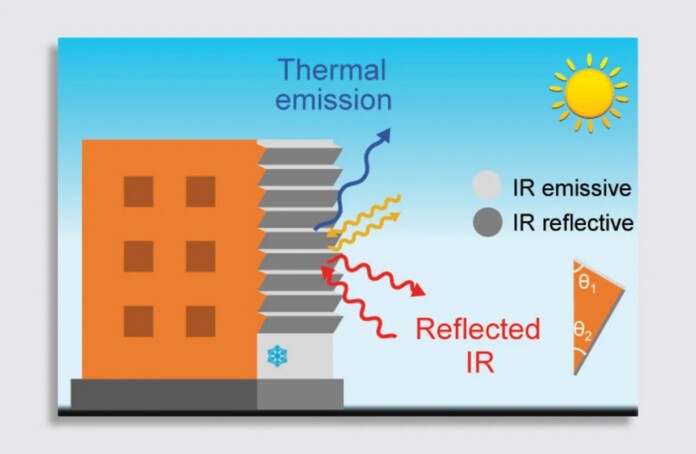 [More info in the article](https://www.goodnewsnetwork.org/build-a-zigzag-pattern-onto-walls-to-keep-buildings-cool-during-heat-waves/)
 open.substack.com
open.substack.com
Please read the whole thing (and if capitalists and conservatives were consistent, they'd be livid, too, at the idea homeless people's property can be stolen and thrown away under the euphemism of "cleaning" - aren't property rights sacred to them?), but here is the conclusion: >This is what we give up — always so much more than we think — in agreeing to scapegoat, to sacrifice the homeless everyone else gives up public space. An ordinance that says no camping or sleeping in public quickly becomes no loitering in public. Stories are already emerging in the wake of the Grants Pass ruling of random people being told that they cannot sit, cannot eat, cannot exist in public space. Often these people aren’t homeless, but how can they prove that? This ruling furthers the trend, one which is not new, of the privatization of public space and the need to be a consumer to exist out in the world. And this is just one way that abandoning the unhoused hurts us all. Equally significant is that in abandoning those who cannot afford housing we agree to frame shelter as something you must earn, rather than a basic need that we all must be granted in this world. That cannot stand. >What we need, now more than ever, is solidarity across all forms of division. We cannot allow the dehuamnization or that criminalization of homelessness, of poverty, of those struggling to get by in this system, both because it is unjust and because it hurts each and every one of us. Anything that targets struggling individuals instead of the system they struggle under reinforces the oppressive mechanisms of the system and takes us a step further from liberation, from freedom, and from the world we need.
Great work by residents. But next time they need to have a more organized force to keep the city at bay, bring in the media, call their reps in the city council, etc. You can’t beat the government in force but you can embarrass them until they give up.

Greenery on walls can [reduce a buildings heat loss by 30%](https://www.treehugger.com/living-walls-can-reduce-heat-loss-in-buildings-5212309), improve air quality, help absorb sounds, and can even [reduce a cities temperature](https://www.forbes.com/sites/jamiehailstone/2021/07/23/are-living-walls-the-key-to-cooler-cities/), so it is no wonder so many places are considering them. Here are two options I think are interesting: **Vertical Meadows:** 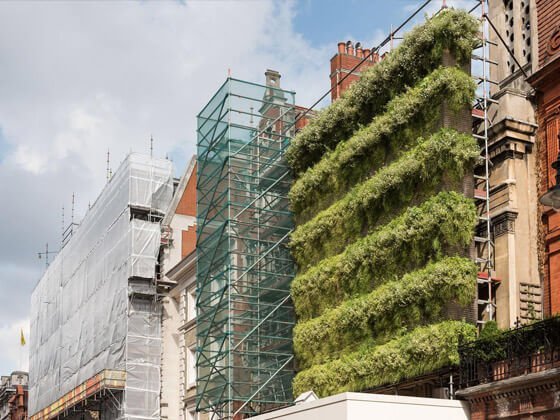 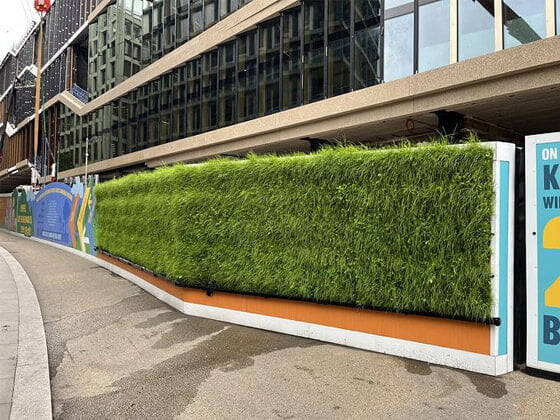 There is a bit of a terminology game here. Verticals *gardens* are sometimes found in wealthy office buildings, but they do nothing for local eco-systems and are often non-local tropical varieties of plants. Even for those found outside, the plants are often picked for appearance alone, instead of what would help local biodiversity. In comparison, vertical *meadows* have a different goal. Vertical meadows (started in [London, England](https://www.verticalmeadow.com/)) are outdoor vertical greenery walls that uses locally-grown native and seasonal plants, ensuring year-round options for wildlife like pollinators and birds. The main problem with these setups is that they tend to require watering systems, which (even if rainwater collection is installed) can be rather costly. More Info: - https://youtu.be/Qyi_7HCVoPM - https://youtu.be/OXUYZdfqq1Q  **Moss Walls:**  Companies like [Respyre](https://gorespyre.com/) use upcycled bioreceptive concrete and a moss coating encourage moss-growth on any vertical surface without risk of damaging the buildings. Other companies(such as [Green City Solutions](https://greencitysolutions.de/en/)) grow panels of moss, which can then be installed like tiles. Due to moss being so inexpensive to incorporate, it is becoming a popular option. For added benefits, moss is drought tolerant to a point, and can absorb [6x more C02 than other plants](https://www.goodnewsnetwork.org/the-magic-of-moss-the-tiny-plant-absorbs-6x-more-co2-than-other-plants-says-new-study/). Moss is basically a living filter, and can even [filter arsenic out of water](https://www.eurekalert.org/news-releases/662099#:~:text=Moss%20capable%20of%20removing%20arsenic%20from%20drinking%20water%20discovered&text=A%20moss%20capable%20of%20removing,harmful%20for%20people%20to%20drink.). More info: - https://youtu.be/cE02cQIVSAs - https://www.youtube.com/watch?v=7tYG3MepUu0 - https://www.youtube.com/watch?v=7tYG3MepUu0 However, moss can be hard to grow commercially(mostly due to the fact that they release spores instead of seeds), so many of the mosses people buy, especially those used for craft supplies, are illegally poached from the wild. If a little is left behind, moss typically can regenerate, but many harvesters simply roll up huge blankets of moss, leaving nothing behind. It is estimated that the mosses can take [10-20 years](https://www.iatp.org/news/for-mountain-people-moss-is-a-cash-crop-wv) to grow back. So, please research where the moss is sourced if you plan on buying any. If the company does not grow it themselves or does not mention where they source it, do not buy any.
 reasonstobecheerful.world
reasonstobecheerful.world
I grabbed some quotes for those short on time. More details on everything are in the article. 1. > In São Paulo’s favelas, low-income communities are building their own green roofs. These affordable vinyl sheet roofs were created by Teto Verde Favela, a nonprofit founded by local Luis Cassiano. 2. > In place of traditional air-conditioning, Seville has turned to a 3,000-year-old solution. With the help of two scientists, the city in southern Spain is reviving a Middle Eastern technology: qanats, underground channels that transport water from higher to lower altitudes and drive the coolness upwards. 3. > A simple approach to heat is helping Singapore address its urban heat challenges: painting buildings and other surfaces with reflective paint. 4. > Munich’s climate-friendly cooling system utilizes natural energy from underground water streams. According to the city utility of Munich, Stadtwerke Muenchen (SWM), the use of these natural cold water streams has resulted in energy savings in the city of 70 percent compared to traditional cooling technology like air conditioning. Thanks to the city’s cooling system, more than 80,000 residents in Munich receive ecological energy. https://reasonstobecheerful.world/cities-cool-down-creatively/
 www.bloomberg.com
www.bloomberg.com
[Pocket link](https://getpocket.com/explore/item/behind-the-accidentally-resilient-design-of-athens-apartments)

Have you ever wondered why so many large chain stores have two sets of doors? No, it is not just to store shopping carts. Where I live, any home that is around 100 years old (that hasn't seen any renovations) will very likely have two front doors. Putting it simply, you open one door, step into a small space, and there will be another door in front of you. 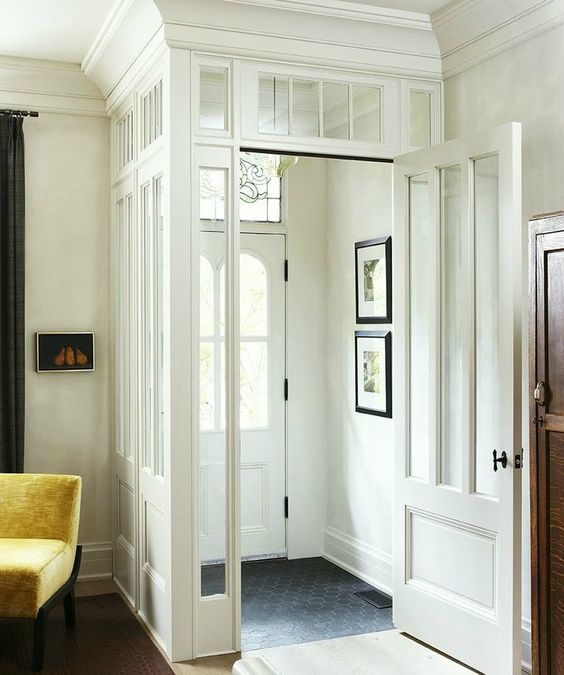 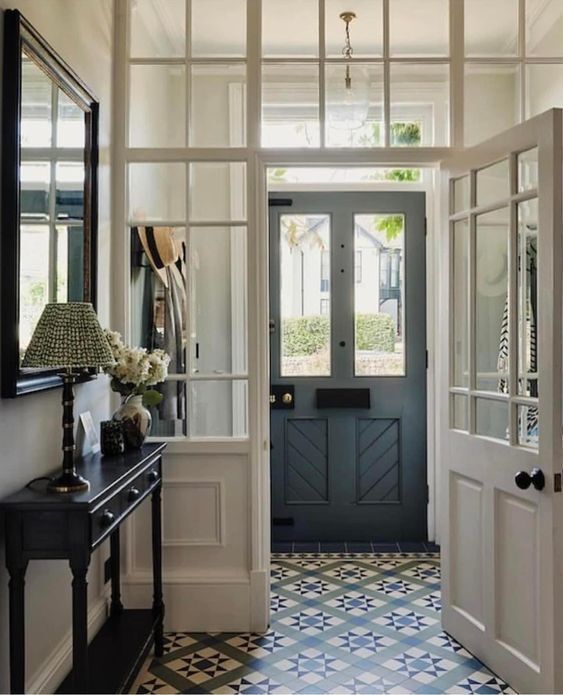 (Image Sources: [Image 1](https://www.pinterest.ca/pin/457115430937940209/) | [Image 2](https://www.pinterest.ca/pin/140806232906426/)) The space goes by many names, including: arctic entry, mud room, breeze room, vestibule, airlock, foyer, and more. For sake of simplicity, I am going to call them "entry vestibules." Entry vestibules create a buffer between the outside and the inside of the building, preventing drafts. This can help greatly with temperature regulation in both the winter cold and summer heat. I can't find number details on energy saving, but the fact that large chains still build them may hint of their importance for money-saving. In homes, this space also typically serves as the mud room ( a place for shoes and jackets). In the name of "first impressions," and open concept designs, vestibules are often the first thing to go during renovations, and I think that's a real shame.
> “Every year summers are hotter and heat waves more frequent, with cities suffering most. A network of climate shelters in Barcelona isn’t only making people more comfortable, it’s also saving lives.” https://www.youtube.com/watch?v=iZI4Rh_APFQ

https://youtu.be/620omdSZzBs >“How do you cool a building without air conditioning? Using an approach called biomimicry, see how architect Mick Pearce harnessed the ingenuity of termites to design a natural cooling system for the largest commercial building in Zimbabwe.” Using the technology inspired by a termite mound, The Eastgate Centre in central Harare, Zimbabwe uses up to 35% less energy than other buildings. 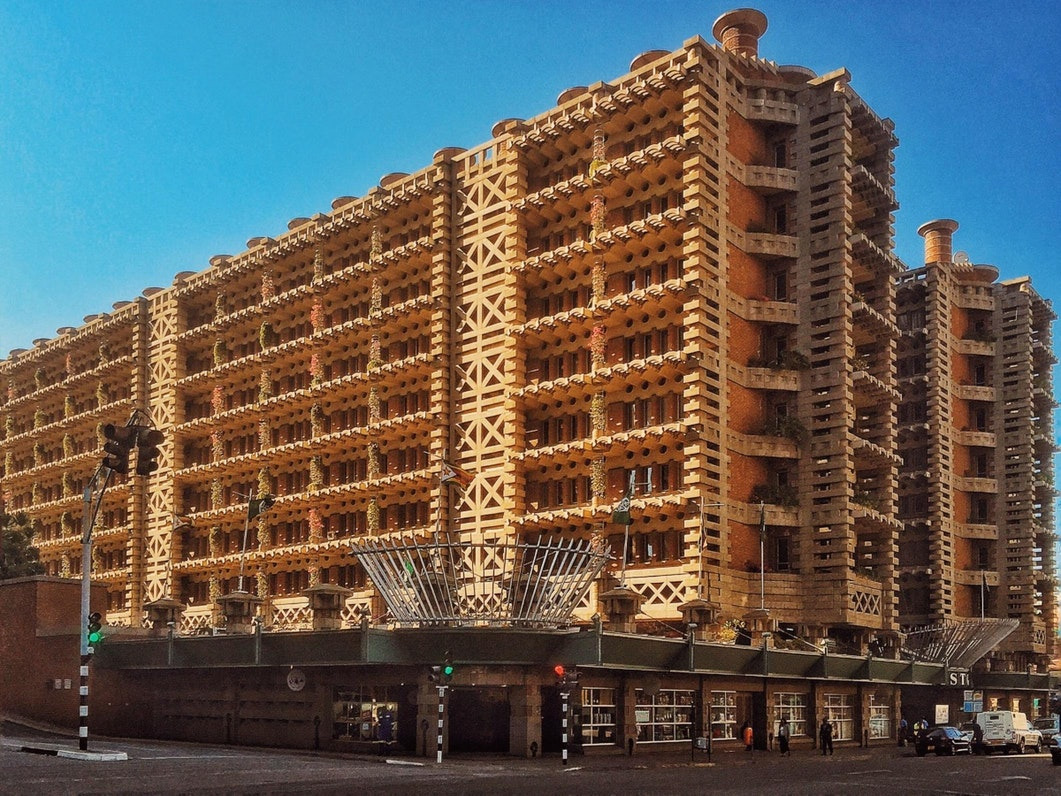 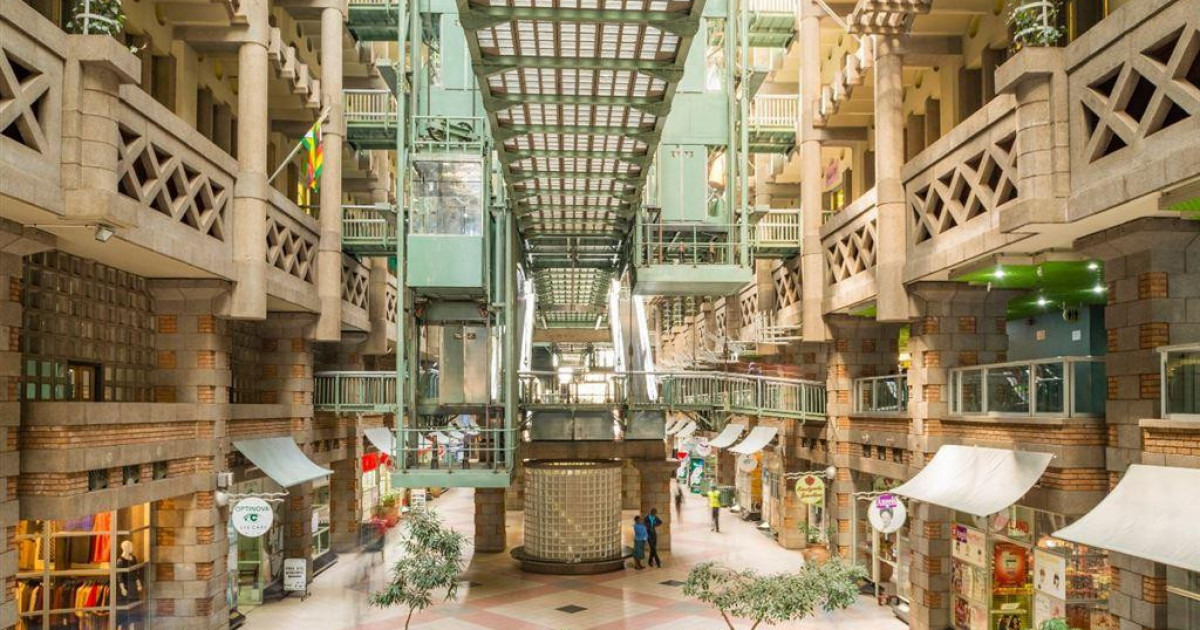

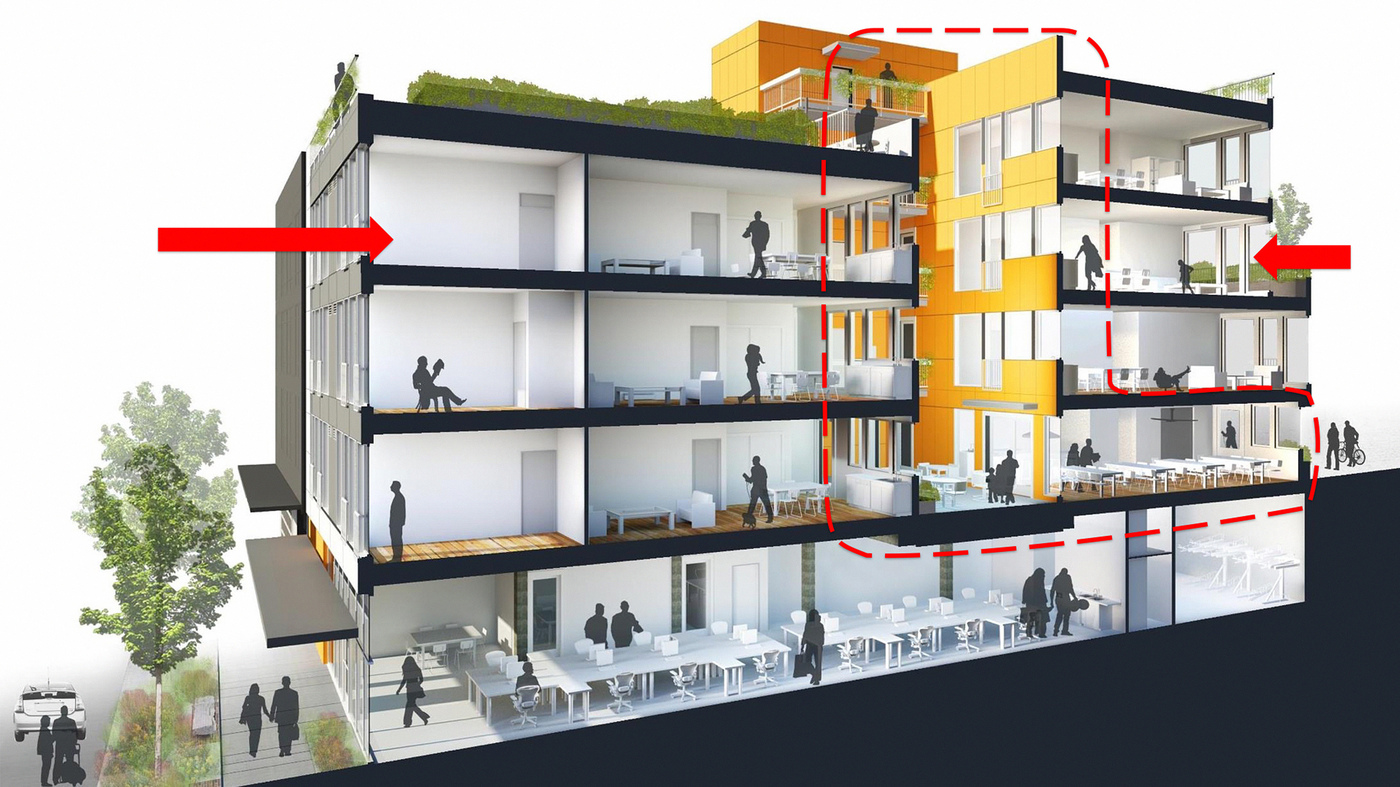 Have you ever heard the saying “it takes a village to raise a child?” Well, where I live, most people do not know the name of their next door neighbor. This isolation can cause loneliness, but it is more than that. Having a community is helping people do jobs they can’t, it's lending tools, it's teaching someone something their parents never taught them, and more. Luckily, there is a solution that is becoming common in both co-housing and eco-villages around the world. They utilize common areas or community centers, as well as outdoor spaces(such as courtyards or rooftop gardens). While you still have your private home with your own kitchen, you also have these spaces which are open to everyone. Here are some ideas you might see in these common spaces: - Indoor play area. In some, the retired senior citizens who like to keep busy volunteer to watch children in these areas while parents are at work. - Dining room big enough to fit every person who lives there and guests. - Community Kitchen. People take turns cooking, or they have occasional dinners together. - Private office spaces (for work-from-home workers who still want to be around people). - Tiny libraries. - Outdoor play area. - Outdoor sitting spaces. - Community gardens and/or a greenhouse. **More Ideas:** - [Window awnings](https://slrpnk.net/post/11578966) which utilize [passive solar](https://slrpnk.net/post/11636738), so the sun is blocked in the summer but not the winter - A central courtyard for passive cooling. Examples: [Skywells](https://www.bbc.com/future/article/20230712-how-ancient-skywells-are-keeping-chinese-homes-cool) (China), [Tsubo-niwa](https://en.wikipedia.org/wiki/Tsubo-niwa) (Japan). [Thevenin @beehaw.org](https://slrpnk.net/u/Thevenin@beehaw.org) adds that a retractable cover of some kind might be important to protect from wind pressure. - Better insulation for better temperature control, and sound proofing. - [Bird-safe windows](https://slrpnk.net/post/11660573) - Rainwater collection for watering plants (or, the more expensive option: for piping into toilets) - White roofs [for cooling in hot climates](https://slrpnk.net/post/11581379), dark roofs for warming in cold climates Recommended Video: - https://youtu.be/mguvTfAw4wk What else would improve apartment buildings?
>Mycelium is a viable option in the search for ecologically friendly and sustainable building materials. Mushroom roots provide mycelium, a fungal substance made of fibers resembling roots and the vegetative portion of a fungus. The use of mycelium in constructing materials matches globally set targets concerned with persistence, henceforth offering an eco-friendly, renewable source that is also carbon-neutral, unlike common substances such as cement, plastic, and steel. > >Mycelium is a type of fungal material obtained from mushrooms. The fungus fibers make up this fungal substance. It is made of hyphae, which are thin white filaments between which the fungi grow. It is used in construction to grow hyphal strands on organic substrates. The process starts by injecting fungal spores into the substrate, which then develop, spread, and bind together. This mixture is put into molds, and the required shapes and sizes are attained. After the substrate is completely covered with mycelium, it is dried to prevent further growth and to produce long-lasting material; this results in very tough, fireproof, and waterproof fibers from the mushroom root that are also environmentally friendly and decompose easily. > >This article explores mycelium’s properties, its construction applications, examples of structures built using this innovative material, and the challenges and prospects.

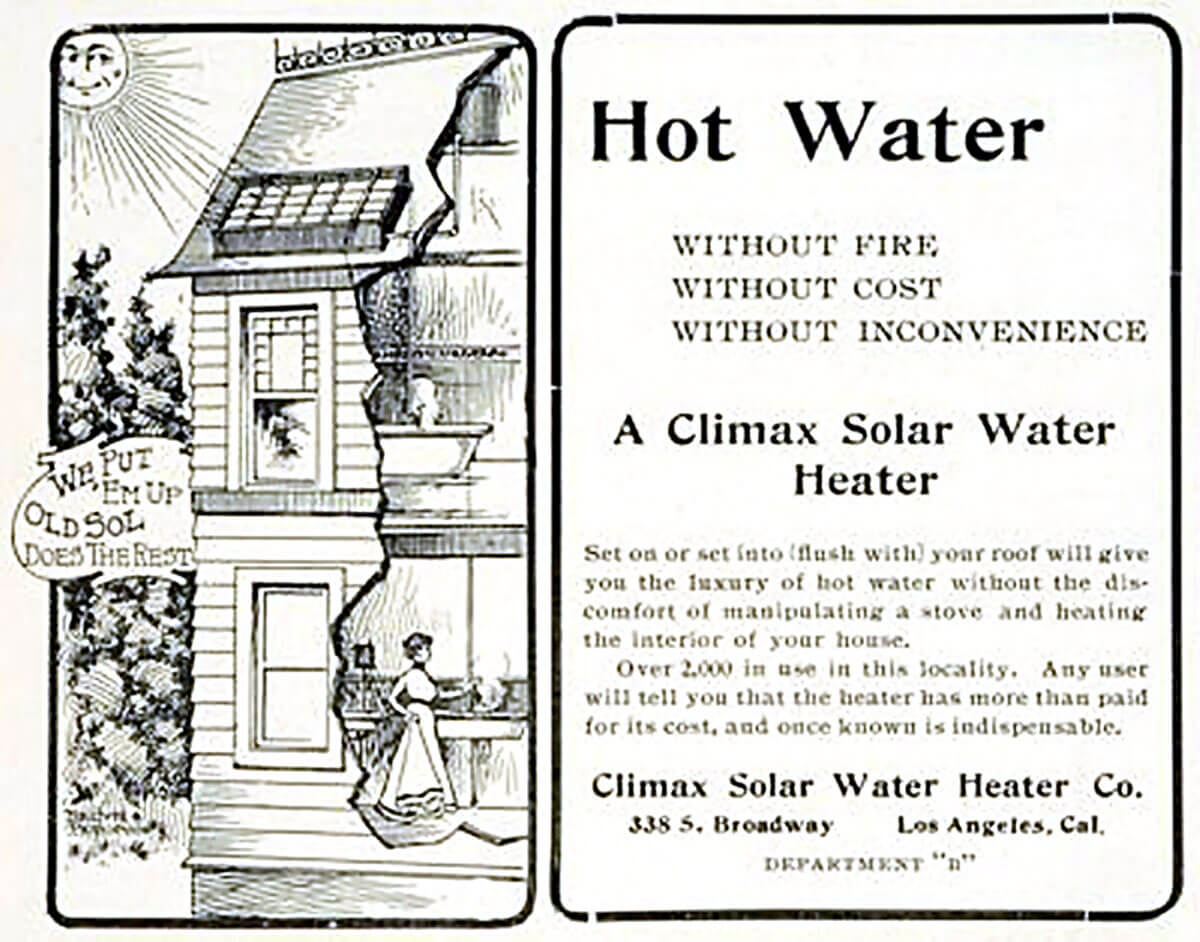 Prior to when electricity became common place, people were looking for other ways to make life easier. One of these inventions, the solar water heater, came in 1760, and boomed with popularity in the 1900’s for warm areas. >“In 1891, Clarence Kemp released the first ‘Climax’ solar water heater in Baltimore. He placed several water-filled iron elliptical tubes inside the box in series with cold water entering one side and warm water exiting from the other end. Multiple tubes avoided warm and cold-water being in close proximity, thus avoiding adverse heat exchanges.” [PassiveHousePlus](https://passivehouseplus.ie/blogs/the-golden-age-of-solar-water-heating) 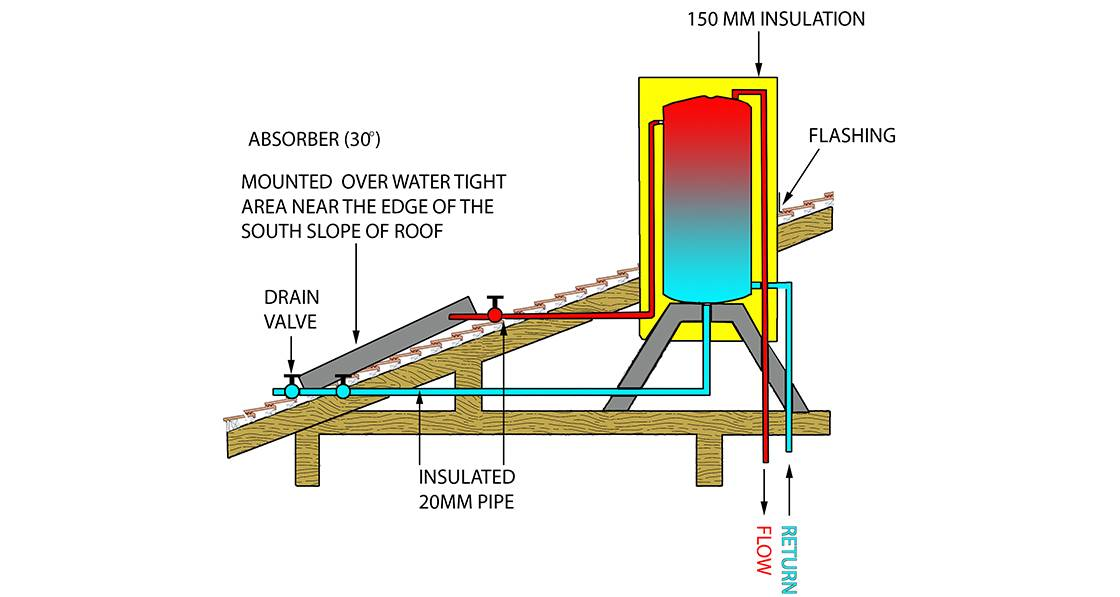 These early models did have faults (such as heat lost, and poor resistance to frost, but continued to improve and build with popularity over time. Eventually, for a complex number of reasons, solar water heaters disappeared and gas and electric took the show. Today, this tech is making a comeback, though with modern touches. Videos with More Info: - https://youtu.be/YdM9TgzRc9A - https://youtu.be/fAyY0kGmgmc









